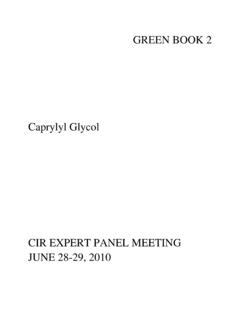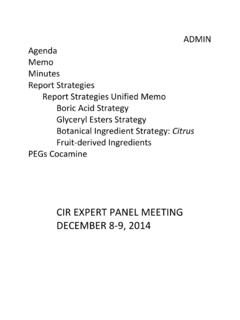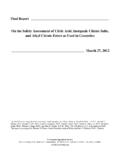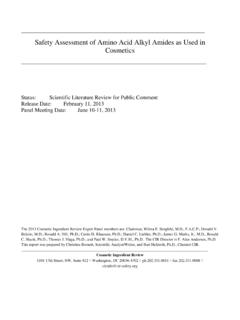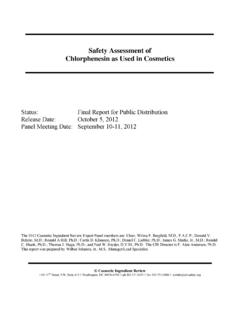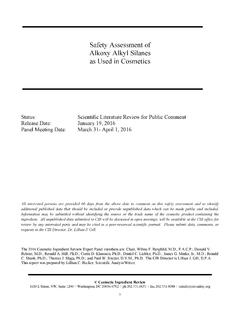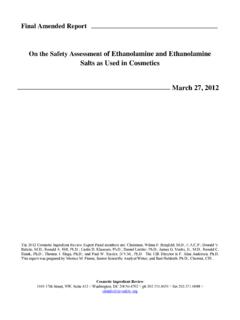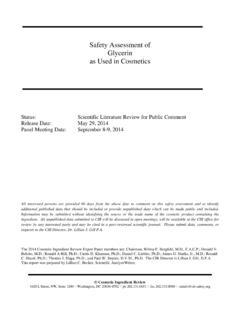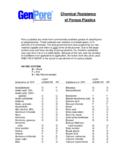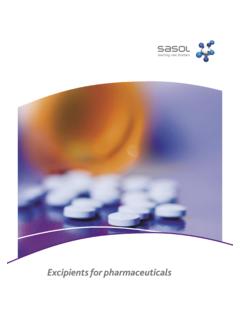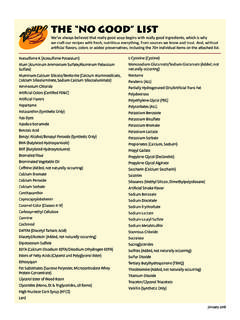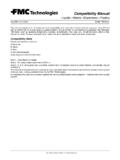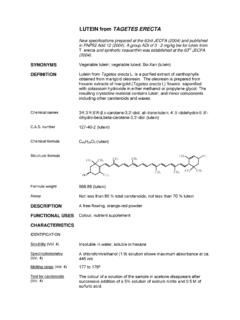Transcription of Final Report of the Cosmetic Ingredient Review Expert Panel
1 Final Report of the Cosmetic Ingredient Review Expert Panel Amended Safety Assessment of Cocos Nucifera (Coconut) Oil, Coconut Acid, Hydrogenated Coconut Acid, Hydrogenated Coconut Oil, Ammonium Cocomonoglyceride Sulfate, Butylene Glycol Cocoate, Caprylic/Capric/Coco Glycerides, Cocoglycerides, Coconut Alcohol, Coconut Oil Decyl Esters, Decyl Cocoate, Ethylhexyl Cocoate, Hydrogenated Coco-Glycerides, Isodecyl Cocoate, Lauryl Cocoate, Magnesium Cocoate, Methyl Cocoate, Octyldodecyl Cocoate, Pentaerythrityl Cocoate, Potassium Cocoate, Potassium Hydrogenated Cocoate, Sodium Cocoate, Sodium Cocomonoglyceride Sulfate, Sodium Hydrogenated Cocoate, and Tridecyl Cocoate September 23, 2008. The 2008 Cosmetic Ingredient Review Expert Panel members are: Chairman, Wilma F. Bergfeld, , ; Donald V.
2 Belsito, ; Curtis D. Klaassen, ; James G. Marks, Jr., ; Ronald C. Shank, ; Thomas J. Slaga, ;. and Paul W. Snyder, , The CIR Director is F. Alan Andersen, This Report was prepared by Catherine Diamante, former CIR scientific analyst. Cosmetic Ingredient Review 1101 17th Street, NW, Suite 412 " Washington, DC 20036-4702 " ph " fax " Copyright 2008. Cosmetic Ingredient Review 1101 17th Street, NW, Suite 412. Washington, DC 20036. Final Report on the Safety Assessment of Amended Safety Assessment of Cocos Nucifera (Coconut) Oil, Coconut Acid, Hydrogenated Coconut Acid, Hydrogenated Coconut Oil, Ammonium Cocomonoglyceride Sulfate, Butylene Glycol Cocoate, Caprylic/Capric/Coco Glycerides, Cocoglycerides, Coconut Alcohol, Coconut Oil Decyl Esters, Decyl Cocoate, Ethylhexyl Cocoate, Hydrogenated Coco-Glycerides, Isodecyl Cocoate, Lauryl Cocoate, Magnesium Cocoate, Methyl Cocoate, Octyldodecyl Cocoate, Pentaerythrityl Cocoate, Potassium Cocoate, Potassium Hydrogenated Cocoate, Sodium Cocoate, Sodium Cocomonoglyceride Sulfate, Sodium Hydrogenated Cocoate, and Tridecyl Cocoate Abstract: Cocos Nucifera (Coconut) Oil is the Cosmetic Ingredient name for the oil pressed from the dried fruit of coconuts.
3 Coconut Oil is often composed of 90% saturated triglycerides and low in nonglyceride impurities. Coconut Oil may function as a fragrance Ingredient , hair conditioning agent, or skin-conditioning agent and is reported in 626 cosmetics at concentrations from to 70%. Cosmetic ingredients can consist of fatty acids derived from Coconut Oil, hydrogenated forms of these fatty acids, corresponding fatty alcohols, simple esters and inorganic salts, and sulfated salts, all of these fatty acids. While most Coconut Oil derivatives are skin conditioning agents, a wide variety of other Cosmetic functions are described. Oral toxicity studies indicate Coconut Oil and Hydrogenated Coconut Oil are relatively nontoxic by ingestion, and as a single 5 g/kg dose to rats, neither compound caused deaths. Rats fed 25% Coconut Oil for 90 d had only slight fatty change of the liver.
4 Hydrogenated Coconut Oil (15%) had no effect on the life span of mice. Hydrogenated Coconut Oil was nontoxic as a single 3 g/kg dermal dose, was nonirritating to the skin in single-insult occlusive patch tests in guinea pigs, and was not a sensitizer. Coconut Oil did not cause skin irritation in rabbits in a 24-h single-insult occlusive patch test. Undiluted Coconut Acid caused minimal irritation in rabbits when assayed in a 24-h single-insult occlusive patch test. Some studies suggested low eye irritation potential in Coconut Oil and Hydrogenated Coconut Oil. Coconut Oil significantly reduced the increase in prostate weight and prostate weight to body weight ratio related to benign prostatic hyperplasia induced by testosterone injections in rats. Clinical tests of bar soap containing Coconut Oil up to 13% resulted in no irritation to mild irritation, with neither phototoxicity nor photosensitivity.
5 A tanning butter containing Coconut Oil did not cause reactions in a 6-wk repeat insult predictive patch test. Potassium Cocoate was an irritant in less than 1% of subjects with pre-existing dermatitis. Lipstick containing 10%. Hydrogenated Coconut Oil caused no irritation after a single patch application and no indication of sensitization in retests performed 14 d later. Coconut Oil was not an allergen at 100% concentration in 12 subjects. The salts and esters of this large group of ingredients derived from Coconut Oil are expected to have similar toxicological profiles as the Oil, its hydrogenated forms, and its constituent fatty acids. In solution, the salts are expected to dissociate in any product formulation independent of whether the salt is sodium, ammonium, magnesium, or potassium.
6 The esters likely will break down into their component parts, none of which present any safety issues, lauryl alcohol and coconut fatty acids for Lauryl Cocoate. The Expert Panel recognizes that use concentration data are not available for all ingredients in this group and that some ingredients in this group are not in current use. The Panel considers that the concentrations for the ingredients that are in use would apply to those with similar functions, but not those in current use. In the absence of inhalation toxicity data, the Expert Panel determined that Coconut Oil and its derivatives can be used safely in hair sprays, because the product particle size is not respirable. The Expert Panel stressed that the cosmetics industry should continue to limit pesticide residues and heavy metals that may be present in botanical ingredients before blending into Cosmetic formulation.
7 In addition, aflatoxin should not be present in Coconut Oil and ingredients derived from Cocos nucifera. With these limitiations, Coconut Oil and the other ingredients derived from Cocos nucifera are safe as Cosmetic ingredients in the practices of use and concentration described in this safety assessment . INTRODUCTION The Panel determined that the available data in the original safety assessment on Coconut Oil, Coconut Acid, Cocos Nucifera (Coconut) Oil and its derivatives, Coconut Hydrogenated Acid, Hydrogenated Coconut Acid, and Hydrogenated Coconut Oil, are used by industry as a convenient source of Coconut Oil, and Hydrogenated Coconut Acid are sufficient lower chain length fatty acids. to support the safety of an additional 21 Cosmetic ingredients in the coconut oil and related fatty alcohols, fatty acid esters, A safety assessment for these ingredients was published in and salts group: Ammonium Cocomonoglyceride Sulfate, 1986 with the conclusion from the Cosmetic Ingredient Butylene Glycol Cocoate, Review (CIR) Expert Panel that these ingredients are safe for use as Cosmetic ingredients (Elder 1986).
8 Caprylic/Capric/Coco Glycerides, Cocoglycerides, Coconut Alcohol, Coconut Oil Decyl Esters, Decyl Cocoate, Ethylhexyl Cocoate, Hydrogenated Coco-Glycerides, Isodecyl 1999), and Sorbitan Cocoate (Andersen 2002), finding them Cocoate, Lauryl Cocoate, Magnesium Cocoate, Methyl safe for use as Cosmetic ingredients . Included in these safety Cocoate, Octyldodecyl Cocoate, Pentaerythrityl Cocoate, assessments were dermal absorption, acute inhalation toxicity, Potassium Cocoate, Potassium Hydrogenated Cocoate, acute oral toxicity, acute dermal toxicity, subchronic and Sodium Cocoate, Sodium Cocomonoglyceride Sulfate, chronic oral toxicity, comedogenicity, ocular irritation, dermal Sodium Hydrogenated Cocoate, and Tridecyl Cocoate. These irritation, reproductive and developmental toxicity, ingredients consist of fatty acids derived from Coconut Oil, genotoxicity, carcinogenicity, and photosensitization studies.
9 Hydrogenated forms of these fatty acids, corresponding fatty The CIR Expert Panel previously reviewed the safety of alcohols, simple esters of these fatty acids, inorganic salts of Lanolin Acid and Lanolin Alcohol (Elder 1980), finding that these fatty acids, and sulfated salts of these fatty acids. the fatty acids and the corresponding fatty alcohols in lanolin While not considered as additional ingredients to this safety are equivalently safe. This safety assessment was re-reviewed assessment, the CIR Expert Panel has also published safety in 2003 and the conclusion was reaffirmed (Andersen 2005). assessments for Butylene Glycol (Elder 1985, Andersen Table 1 summarizes use information and gives the conclusion 2006), Glyceryl Cocoate (Andersen 2004), Methyl Alcohol on these previously reviewed ingredients .
10 (Andersen 2001), Propylene Glycol Dicocoate (Andersen Table 1. Previously reviewed related ingredients . Ingredient Uses Use Concentrations (%) Conclusion Reference Butylene Glycol 165 < - >50 safe as presently used in cosmetics Elder 1985. 813 - 89 reaffirmed in 2006. Andersen 2006. Glyceryl Cocoate 1 - 5 safe as a Cosmetic Ingredient in the Andersen 2004. present practices of use and concentration. Methyl Alcohol 4 - 5 safe as used to denature alcohol Andersen 2001. used in Cosmetic products. Propylene Glycol not in usea not in usea safe as a Cosmetic Ingredient in the Andersen 1999. Dicocoate present practices of Sorbitan Cocoate not in usea not in usea safe for use as a Cosmetic Andersen 2002. Ingredient under the present practices of Lanolin Acid 51 > - 10 safe for topical application to Elder 1980.)

